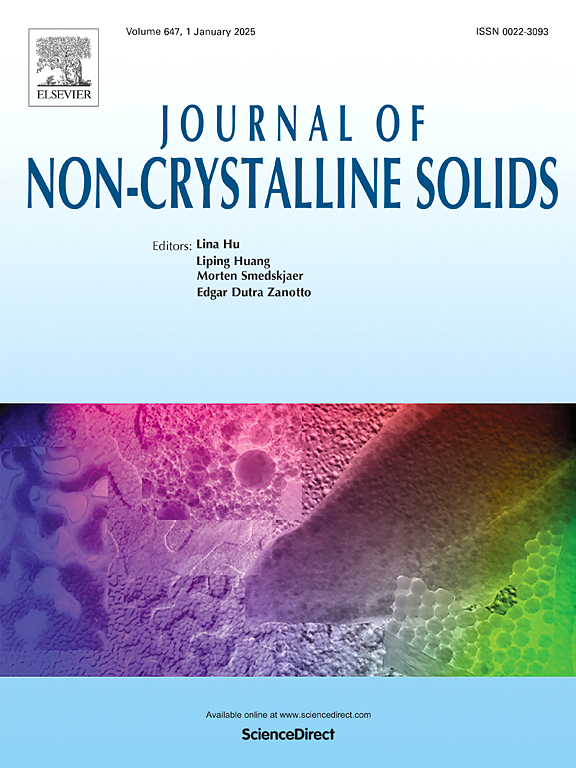Flexible, transparent, flame-retardant cellulose/silica–aluminum composite aerogel films for thermal management
IF 3.2
3区 材料科学
Q1 MATERIALS SCIENCE, CERAMICS
引用次数: 0
Abstract
As the global climate tends to become more extreme, high-performance thermal management materials are important for the comfort of human existence. Cellulose-based aerogels have become a hot research hotspot due to their abundant raw materials and good mechanical properties. Herein, cellulose/silica–aluminum composite aerogels (CSAL) with organic–inorganic structures were obtained by in situ formation of silica–aluminum aerogel nanoparticles via a two-step sol–gel process, which was prepared by dissolving cotton pulp in the ionic liquid. Related properties are investigated with Fourier transform infrared spectroscopy, scanning electron microscopy, ultraviolet-visible spectrometer, N2 adsorption, compression tests, thermogravimetric analysis, and ignition tests. The resulting CSAL samples have low density (0.112–0.133 g/cm3), high specific surface area (252.65–464.02 m2/g), good mechanical properties, and excellent transmittance (>60 %). Thus, the as-prepared high-performance cellulose/silica–aluminum composite aerogel films with flexible, transparent, flame retardant, which have great potential for application in lightweight energy-efficient buildings, household equipment and other fields requiring thermal insulation.
求助全文
约1分钟内获得全文
求助全文
来源期刊

Journal of Non-crystalline Solids
工程技术-材料科学:硅酸盐
CiteScore
6.50
自引率
11.40%
发文量
576
审稿时长
35 days
期刊介绍:
The Journal of Non-Crystalline Solids publishes review articles, research papers, and Letters to the Editor on amorphous and glassy materials, including inorganic, organic, polymeric, hybrid and metallic systems. Papers on partially glassy materials, such as glass-ceramics and glass-matrix composites, and papers involving the liquid state are also included in so far as the properties of the liquid are relevant for the formation of the solid.
In all cases the papers must demonstrate both novelty and importance to the field, by way of significant advances in understanding or application of non-crystalline solids; in the case of Letters, a compelling case must also be made for expedited handling.
 求助内容:
求助内容: 应助结果提醒方式:
应助结果提醒方式:


